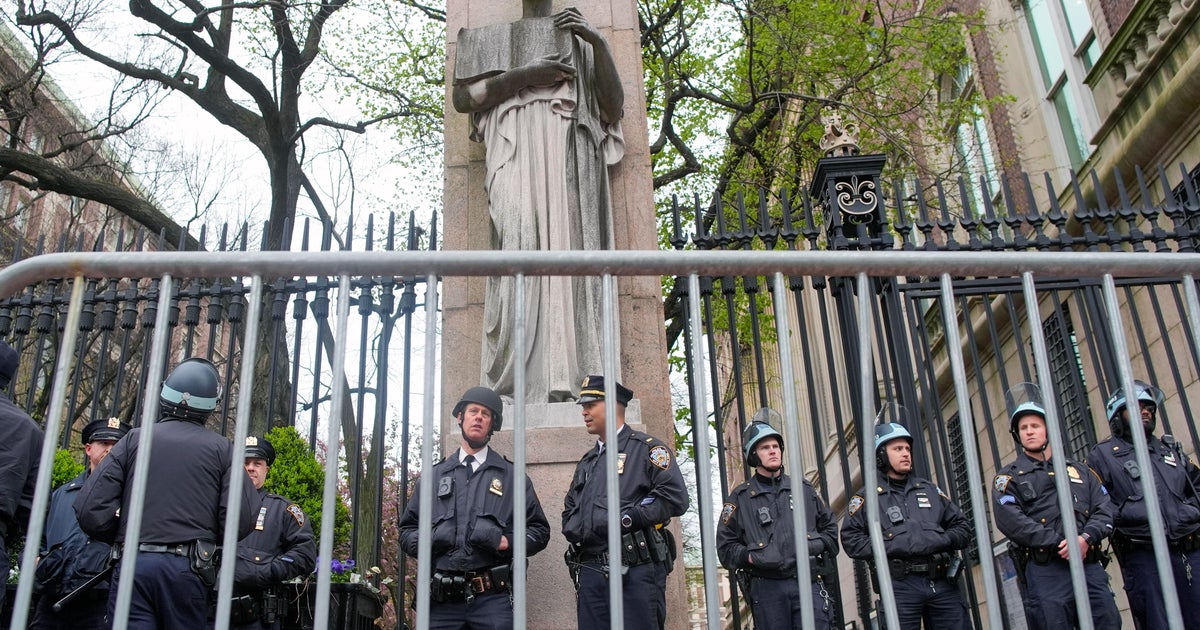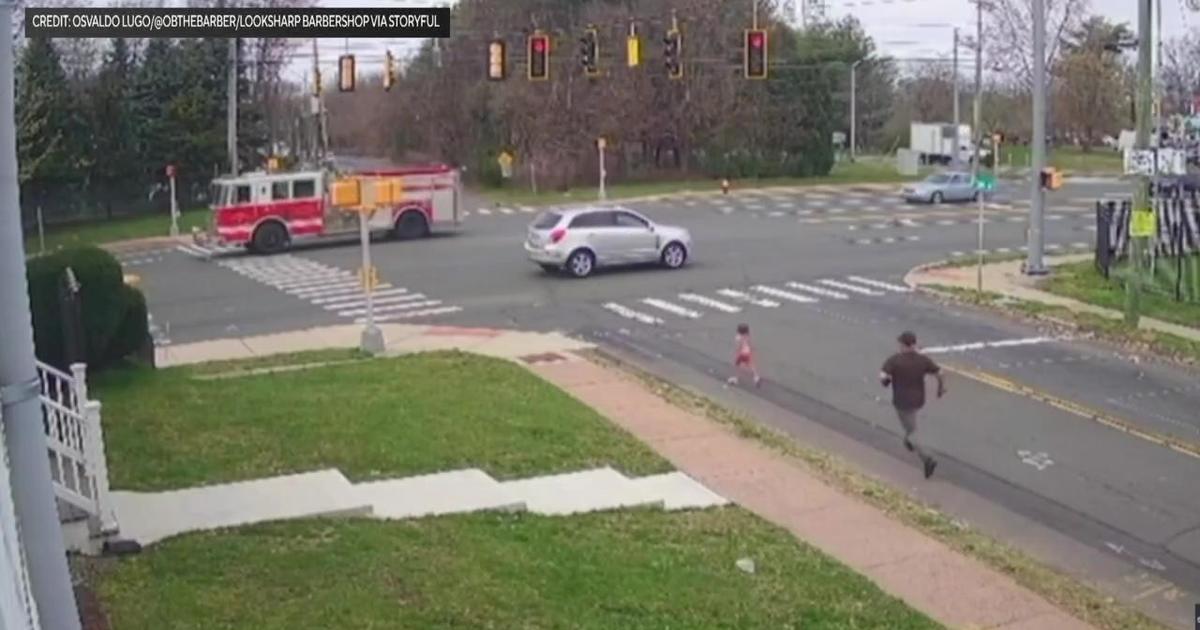CL&P Develops Plan To Boost Reliability In Wake Of Irene, Nor'easter Disasters
HARTFORD, CT (WCBS 880 / AP) - After disastrous power outages following Tropical Storm Irene and the freak October snowstorm, and with a new president at the helm, Connecticut Light & Power has unveiled a plan to boost the reliability of its electrical grid.
WCBS 880 Connecticut Bureau Chief Fran Schneidau On The Story
Podcast
It's a 10-year plan that will cost more than $2 billion and would boost the reliability by as much as 40 percent.
Joe McGee, co-chair of Gov. Dan Malloy's 'Two Storm Panel,' calls the plan a good first step.
"Public reaction to it has been swift. The question is, well, who pays for it?," McGee told WCBS 880 Connecticut Bureau Chief Fran Schneidau.
Customers would foot the bill.
CL&P says, 10 years out, monthly bills would rise about $13. That does include the burying of some wires around town centers, hospitals, and the like.
As Connecticut first began digging out from a major October snowstorm, its largest electric utility fielded as many as a half-million calls per day from customers who were angry and frustrated over widespread power outages.
The calls began to subside within three days, but not because the lights were back on: The outages were contributing to failures in cellphone service.
Without electricity, Northeast Utilities was as helpless as many of its customers in the days immediately following the Oct. 29 storm, according to emails the company sent to state regulators that were obtained by The Associated Press through a Freedom of Information request.
The emails detail problems with poor communications resulting in wrong work crews arriving to help restore power, scarce lodging for visiting utility crews and vehicles sidelined by fuel shortages due to closed gas stations. The emails also show police were notified of threats to workers, including one assault, as well as a threat against Jeffrey Butler, who was then president of subsidiary Connecticut Light & Power.
The storm dumped more than two feet of snow in some parts of Connecticut, bringing still-leafy tree branches down on power lines. It set a record for outages from a single event in Connecticut, with more than 830,000 homes and businesses losing electricity. The outages lingered beyond Connecticut Light & Power's self-imposed deadlines - for up to 11 days in some cases - and triggered a flurry of state investigations and Butler's resignation.
The emails were sent under what has become "protocol and practice'' for utilities to keep regulators informed during major storms, said Dennis Schain, spokesman for the Public Utilities Regulatory Authority. The information is shared with the governor and other policymakers to determine the state's strategy to deal with the storm, he said.
Lisa Thibdaue, Northeast Utilities' rates and regulatory vice president, represented Northeast Utilities in many of the emails. Through Northeast Utilities spokesman Al Lara, Thibdaue declined to be interviewed. "We'll let the emails speak for themselves,'' he said.
As the snow fell on Saturday night, Oct. 29, Thibdaue told Kevin DelGobbo, head of the Public Utilities Regulatory Authority, that the utility expected a "multi-day outage event.'' She said the Hartford-based utility had requested 500 crews that were expected to start arriving Sunday morning, with most arriving Sunday night.
However, the request for mutual aid fell short as crews at other utilities in the Northeast stayed close to home, Lara said. By Monday, Connecticut Light & Power had 499 line and tree crews by hiring contractors, he said.
Thibdaue told regulators Nov. 1 - two days after the storm moved out of Connecticut - that the utility was beginning to restore power.
"Today is viewed as transition day from road clearing and assessing to full-scale restoration,'' Thibdaue wrote.
"Two to three days of storm assessment, that needs to be speeded up dramatically,'' said Joe McGee.
By Nov. 2, Thibdaue said the utility was "receiving lots of criticism'' because its website projected power would be mostly restored four days later and officials were looking to provide more precise information.
"We're trying to figure out how to handle the need for further granularity,'' she wrote.
Tempers began to flare almost immediately after the storm passed. Thibdaue said Oct. 31 that police were alerted to two threats made to the call center, one targeting Butler. She was not specific.
Two days later, a field worker was assaulted by an "irate passerby who appeared to be drunk,'' she said. The worker was not injured.
The following Saturday, she told state officials that unspecified threats against employees continued to be a concern.
Northeast Utilities missed its Sunday target of restoring power, infuriating many customers and drawing a rebuke from Malloy, who said the utility's handling of the outages was unacceptable. Electricity finally returned Nov. 9.
Numerous logistical problems plagued the company. Thibdaue wrote Nov. 1 that a lack of fuel was "starting to impede the ability of our employees to get to and from work assignments.''
Later that day, she wrote that work crews from Calgary, Canada, were delayed due to unspecified "travel issues.''
Some contractors failed to send the number or type of crews they had promised, Thibdaue wrote. In one case, she said, diggers arrived when the utility asked for bucket trucks and line men.
Because hotels were filled by guests escaping chilly houses with no electricity or hot water, the utility was forced to put contractors up in hotels far from their work assignments, leading to long travel times, Thibdaue said.
She also said figuring out who was responsible for clearing roads was a major issue. Northeast committed to at least one crew to every affected town to clear wires from roadways to provide access to emergency vehicles, she said.
"Many towns are expecting us to clear all roads, even where we have no facilities involved,'' she said. "This has impeded our overall progress in getting to restoration.''
McGee said his committee will address the lack of clear responsibility.
"What's been identified is the need for a clear standard between the utilities and towns,'' he said. "What comes first are towns clearing roads, utilities restoring power.''
Incoming customer calls reached 559,000 on Oct. 30, the day after the storm hit Connecticut, or about 16,000 calls an hour, Thibdaue told DelGobbo. The hourly rate was equivalent to as many calls on a typical day, she said.
Despite the lull in calls that soon followed, Thibdaue learned that cellphone outages that reduced customer calls would soon end. AT&T was bringing in cell towers on wheels and trucks.
"You learn something every day,'' she said.
What do you have to say about CL&P? Sound off in the comments section below!
(TM and Copyright 2011 CBS Radio Inc. and its relevant subsidiaries. CBS RADIO and EYE Logo TM and Copyright 2011 CBS Broadcasting Inc. Used under license. All Rights Reserved. This material may not be published, broadcast, rewritten, or redistributed. The Associated Press contributed to this report.)



